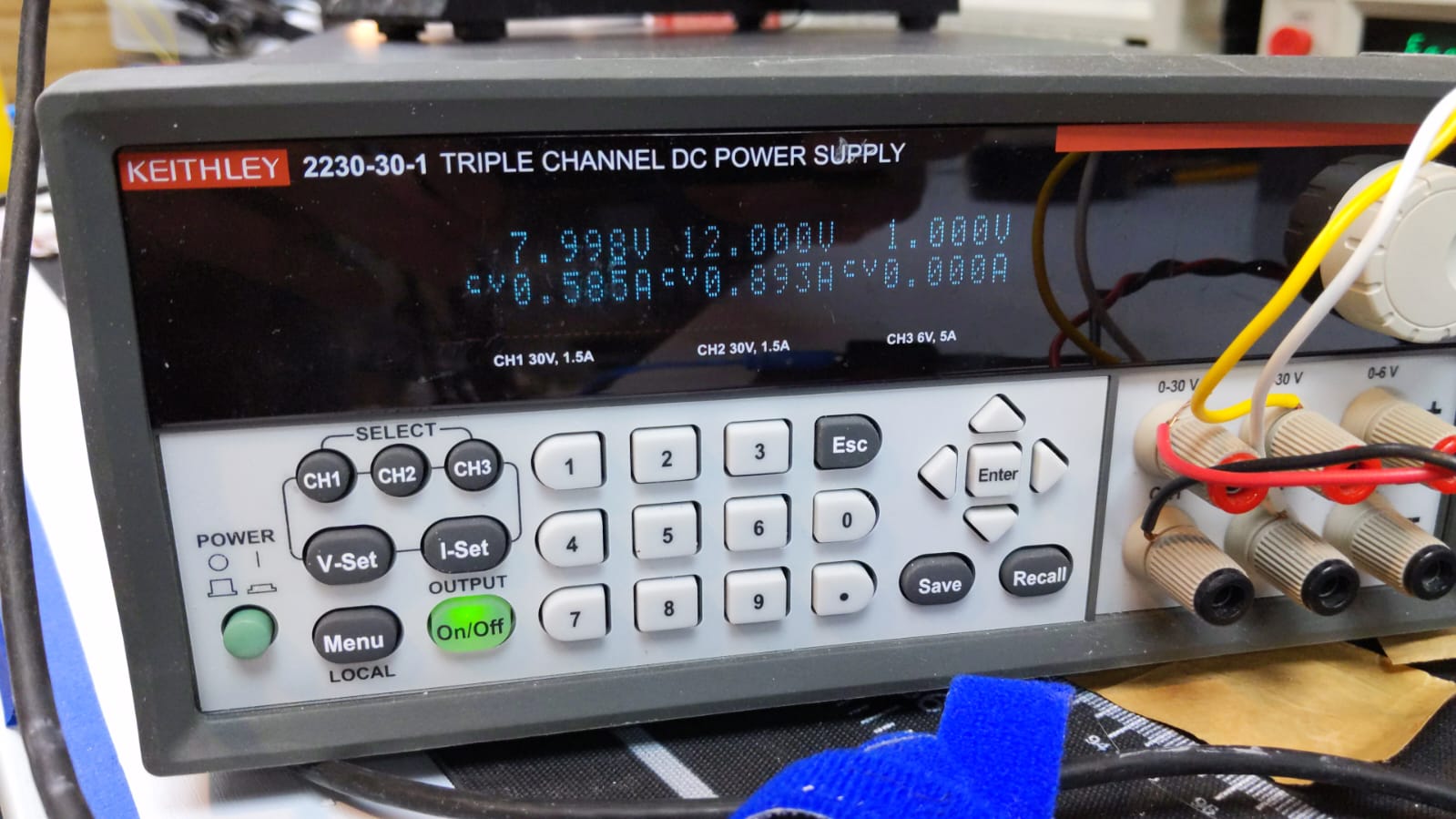MiniTEC air bath is now assembled together and ready for first tests.
Since it would be surrounded by measuring devices, I've decided to cut it for less depth. It is still big enough to fit two ESI SR104s or two typical half-rack DMM such as Keithley 2002. Also smaller volume is faster to cool/heat.
Here it is in expected habitat:
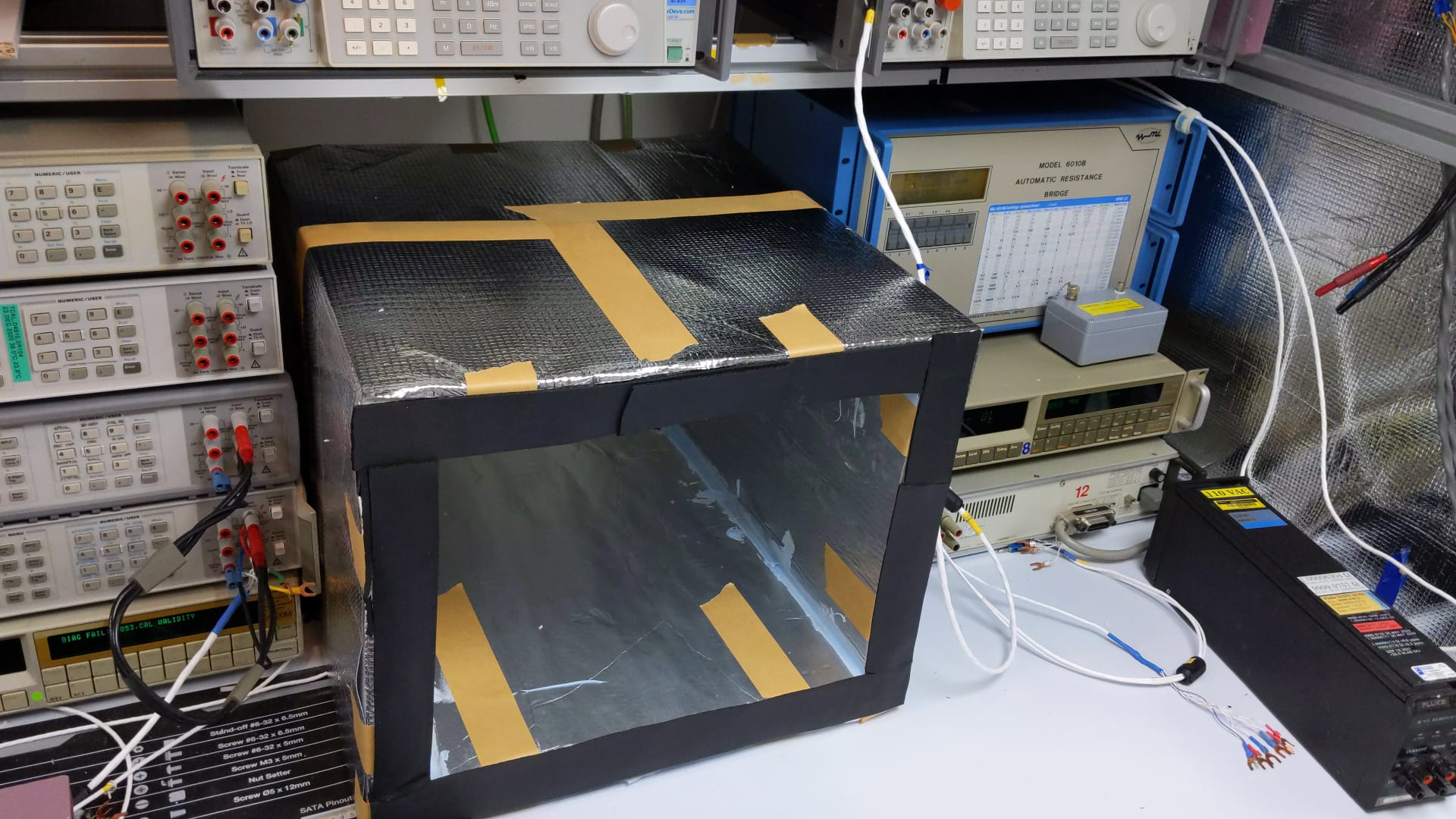
ManateeMafia wanted to see more details of actual TEC assembly, so his wish granted here.
Since we have just 40W nonamium TEC module, single 120mm CPU AIO watercooler used. It is cooled with 12V 0.6A fan and uses same voltage to run internal pump on heatexchanger. There is no filling required, such systems come prefilled.
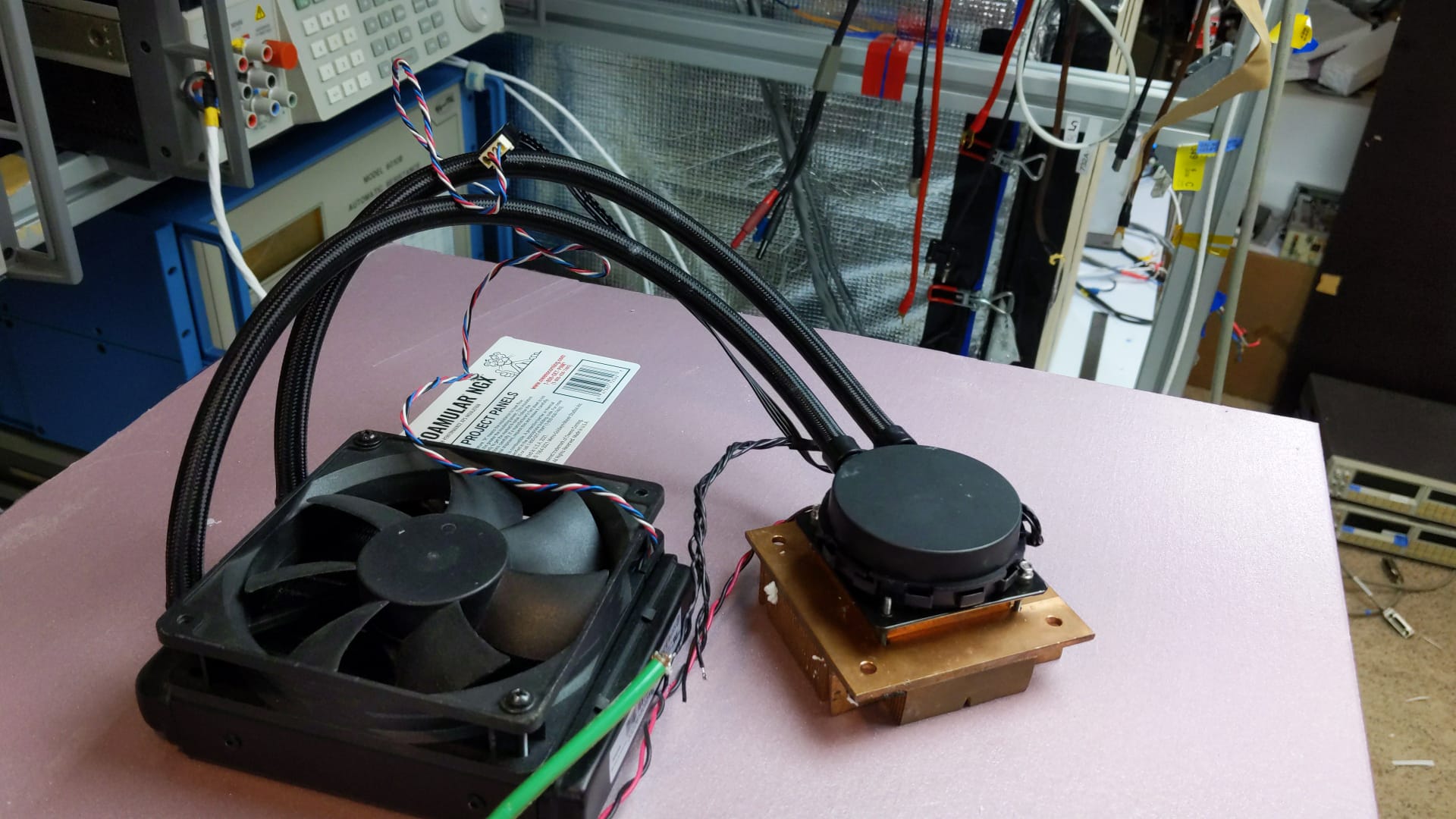
Peltier is sandwitched between former Xeon 604 server copper heatsink and waterpump/waterblock. Four steel bolts provide tension between parts. Everything is mounted on 25mm thick foam panel.
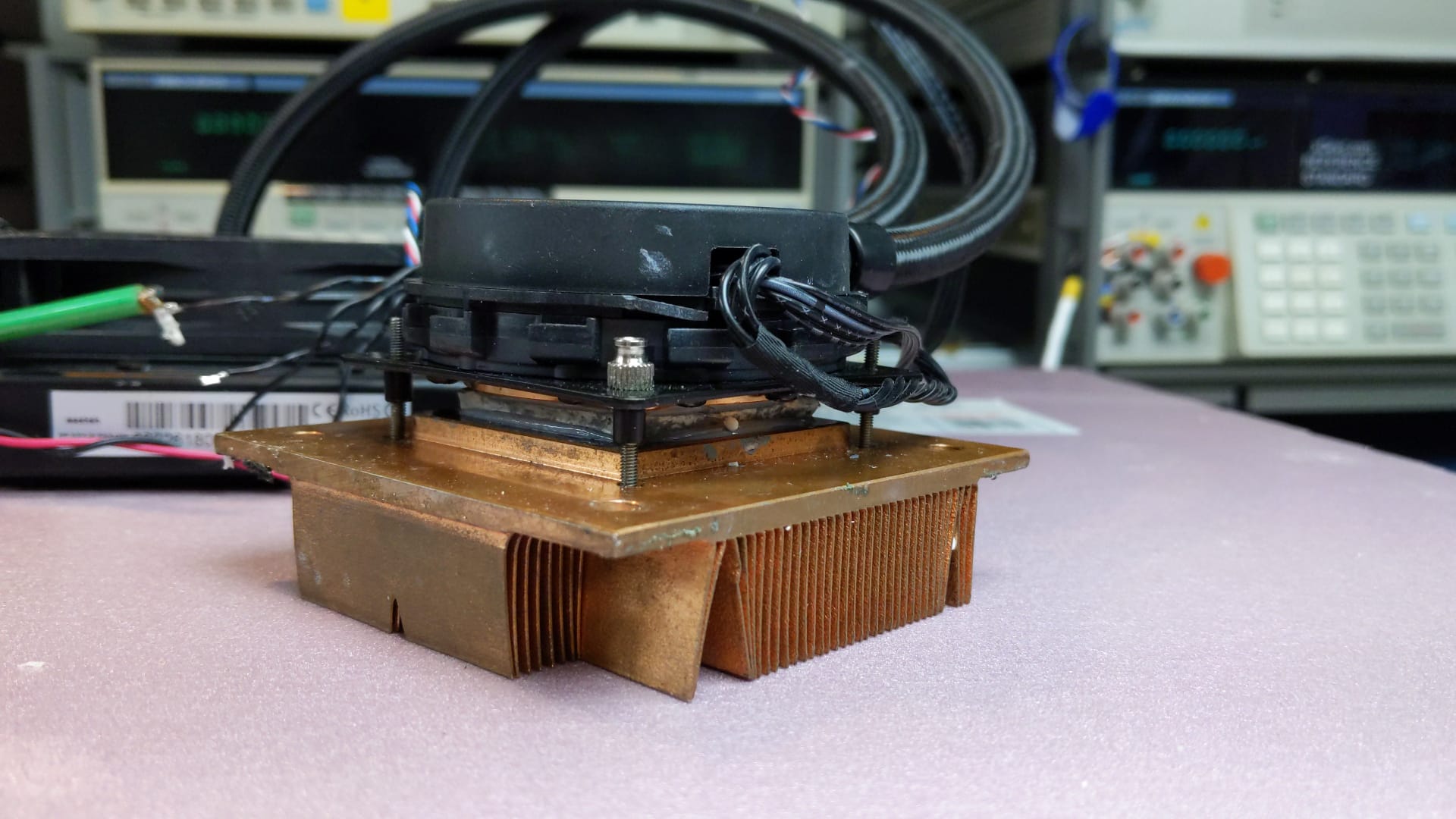
Inner (facing chamber volume) side expose only copper heatsink. Thingy on blue coax with a wire is Pt100 Honeywell HEL-705 RTD. Volt-nuts must appreciate use of bent Fluke 5700A binding post. No scrap production

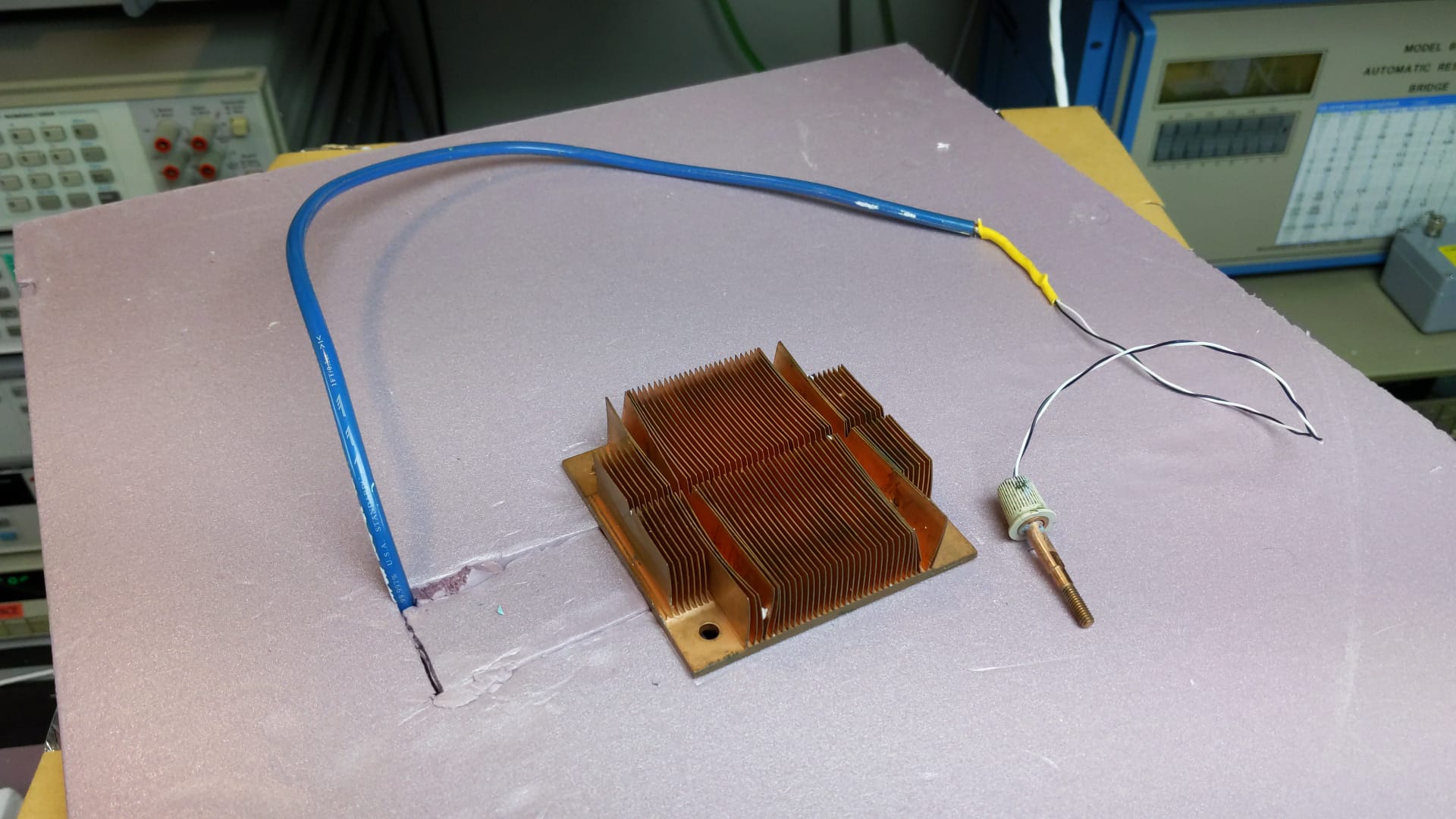
To mix air within chamber volume angry top quality Sanyo San Ace 80 is used, 12V rated 1.1A. I usually run this fan at 6-7V to reduce noise, and it still gives plenty airflow. Fan size is 80 x 80 x 38mm.
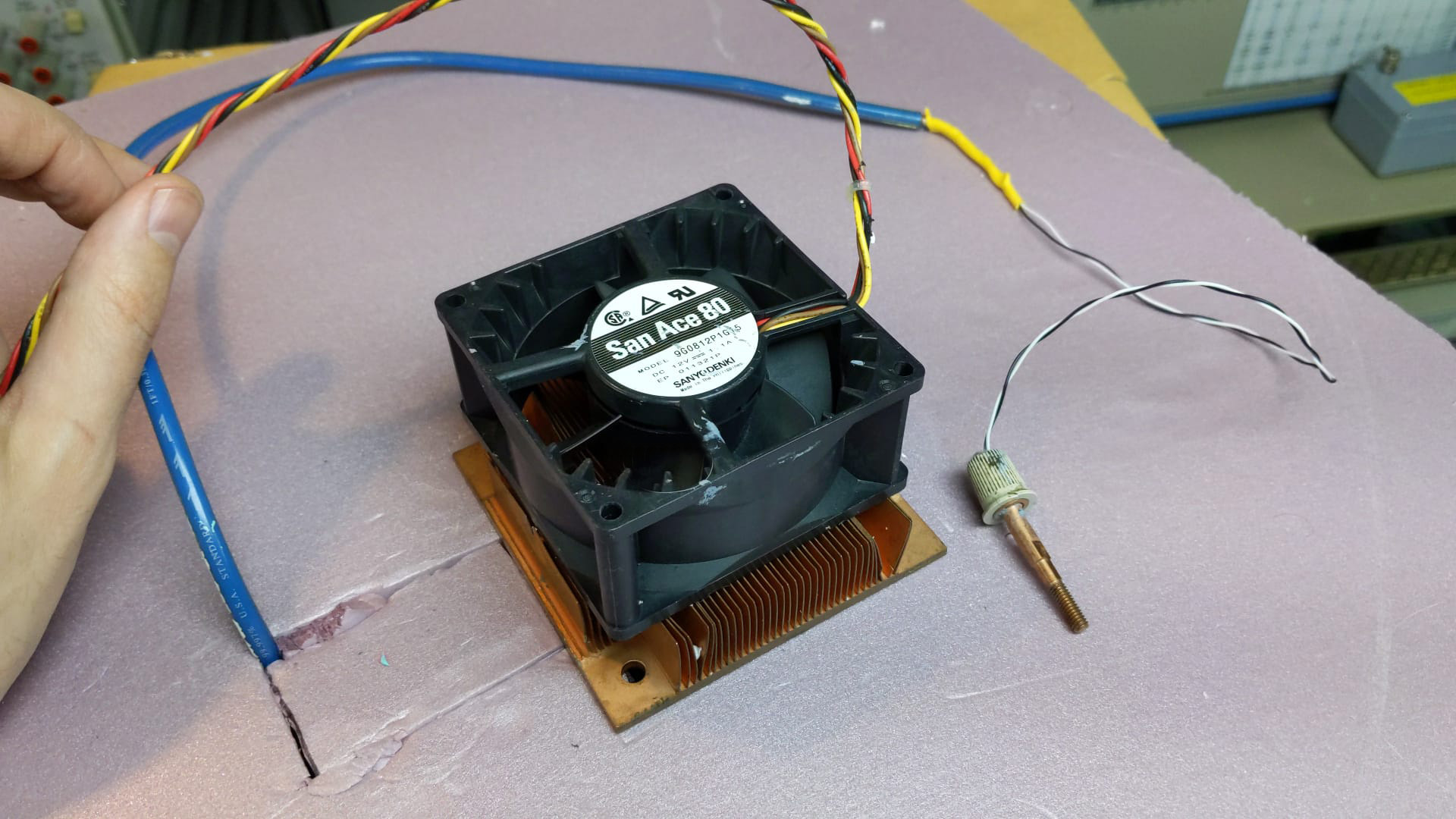
Other side with liquid tubing and pump head.
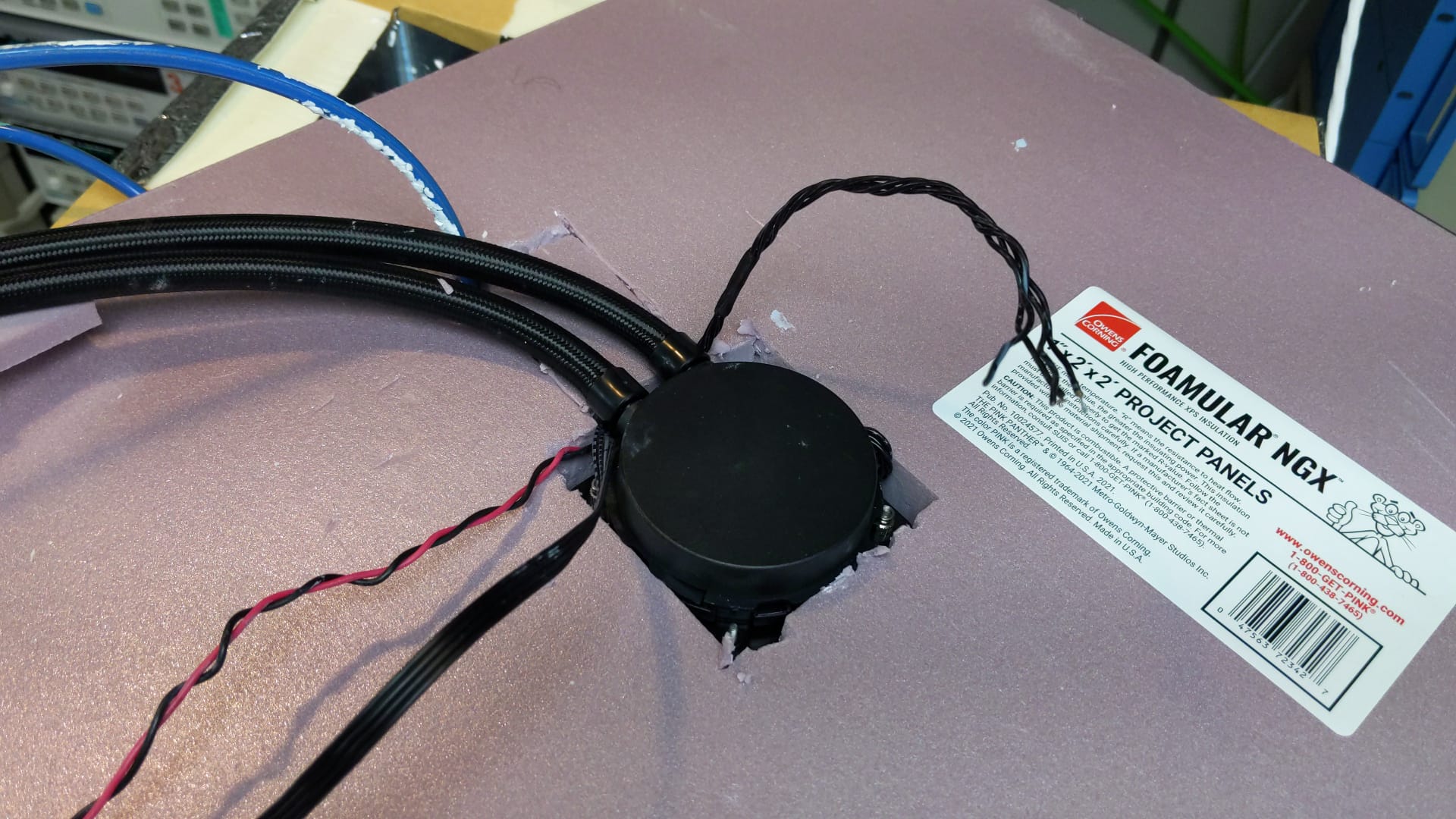
To seal any possible gaps and prevent air leakage to ambient all corners around copper heatsink (cold side) are sealed with strong adhesive aluminum tape.
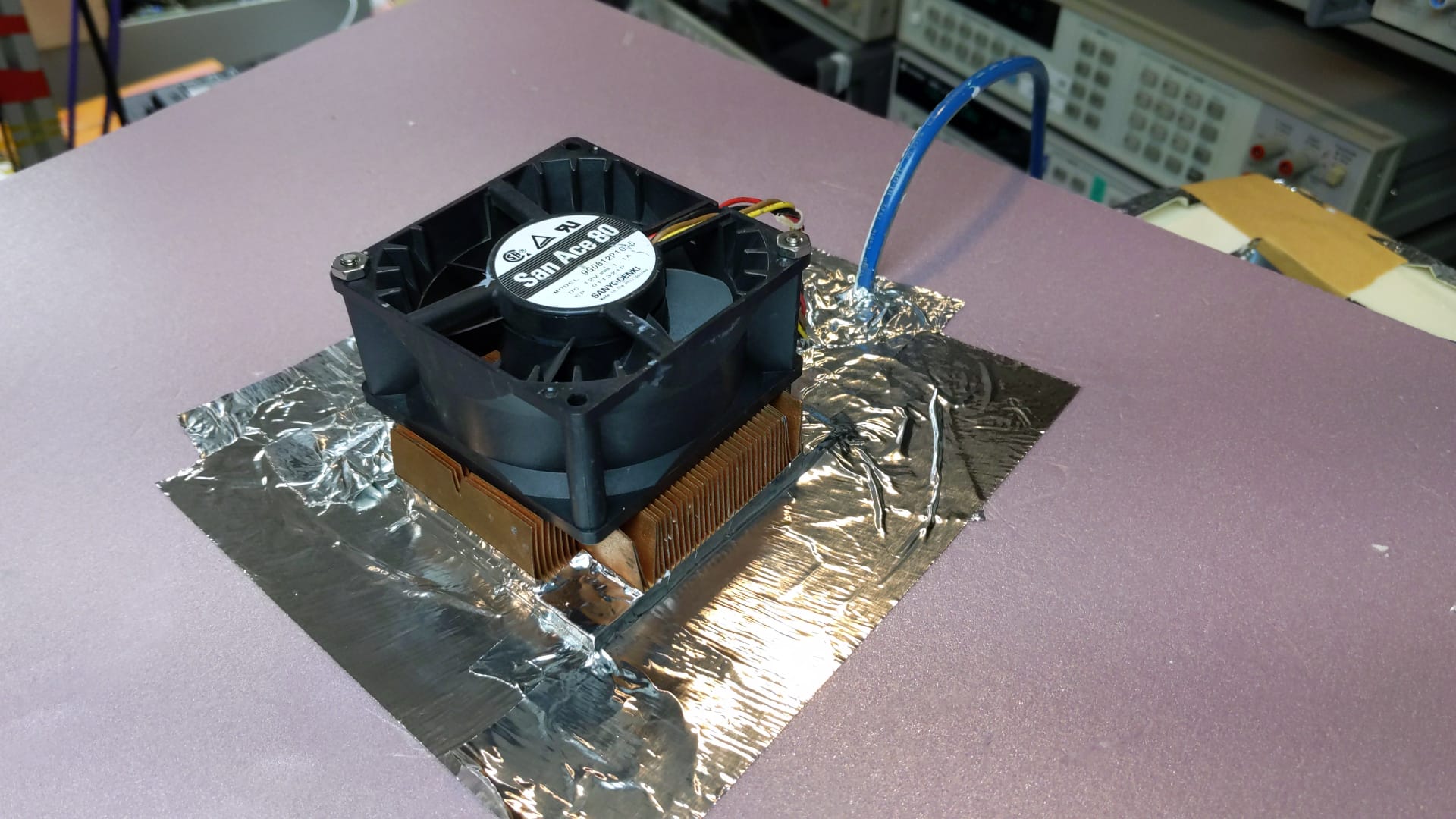
Hot side gaps and cavities around waterblock are further insulated with small-expanding foam. It also provides little bit stronger support to assembly in place, so it stays happy and fixed.
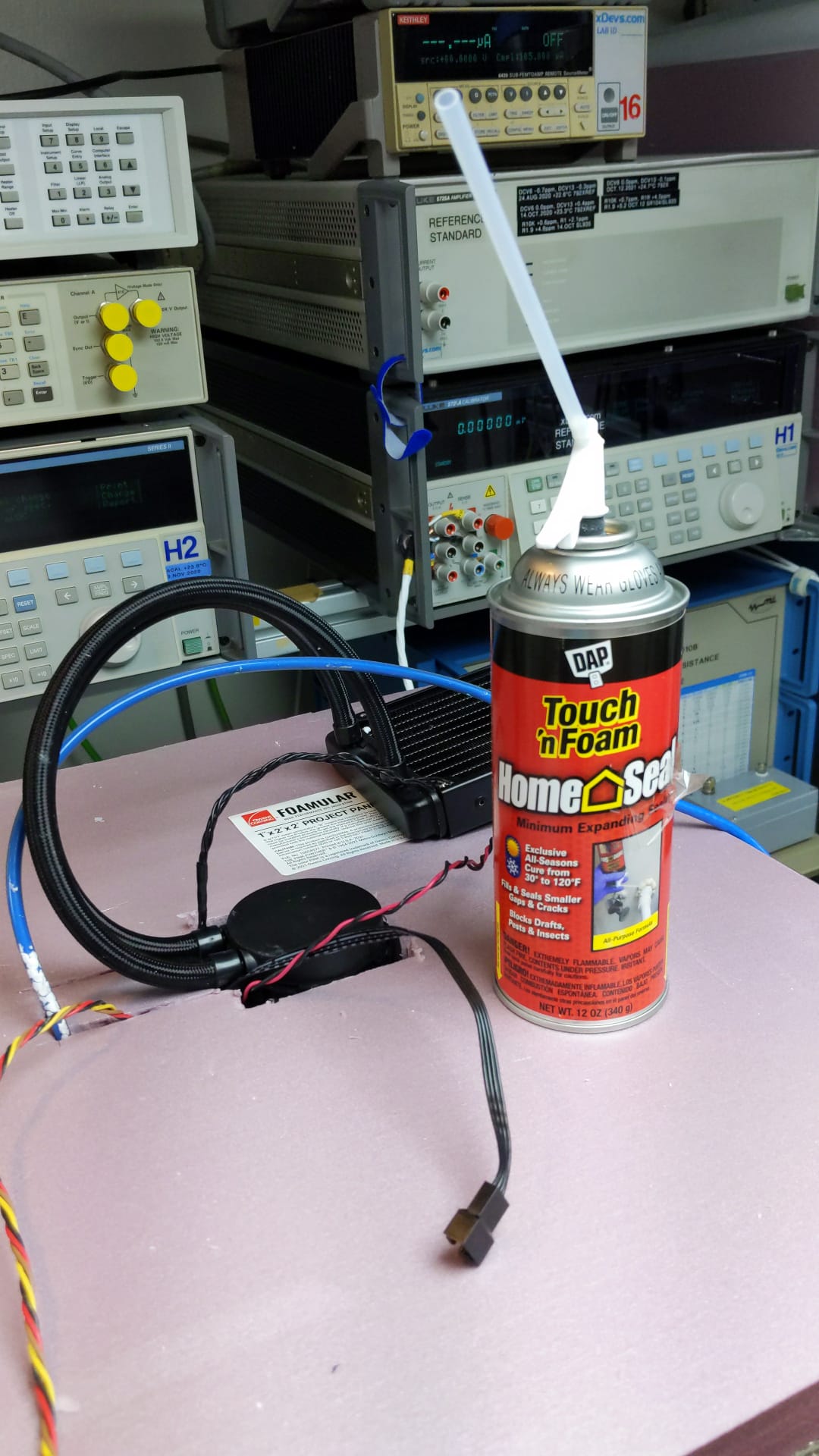
All wiring escaped before foaming up.
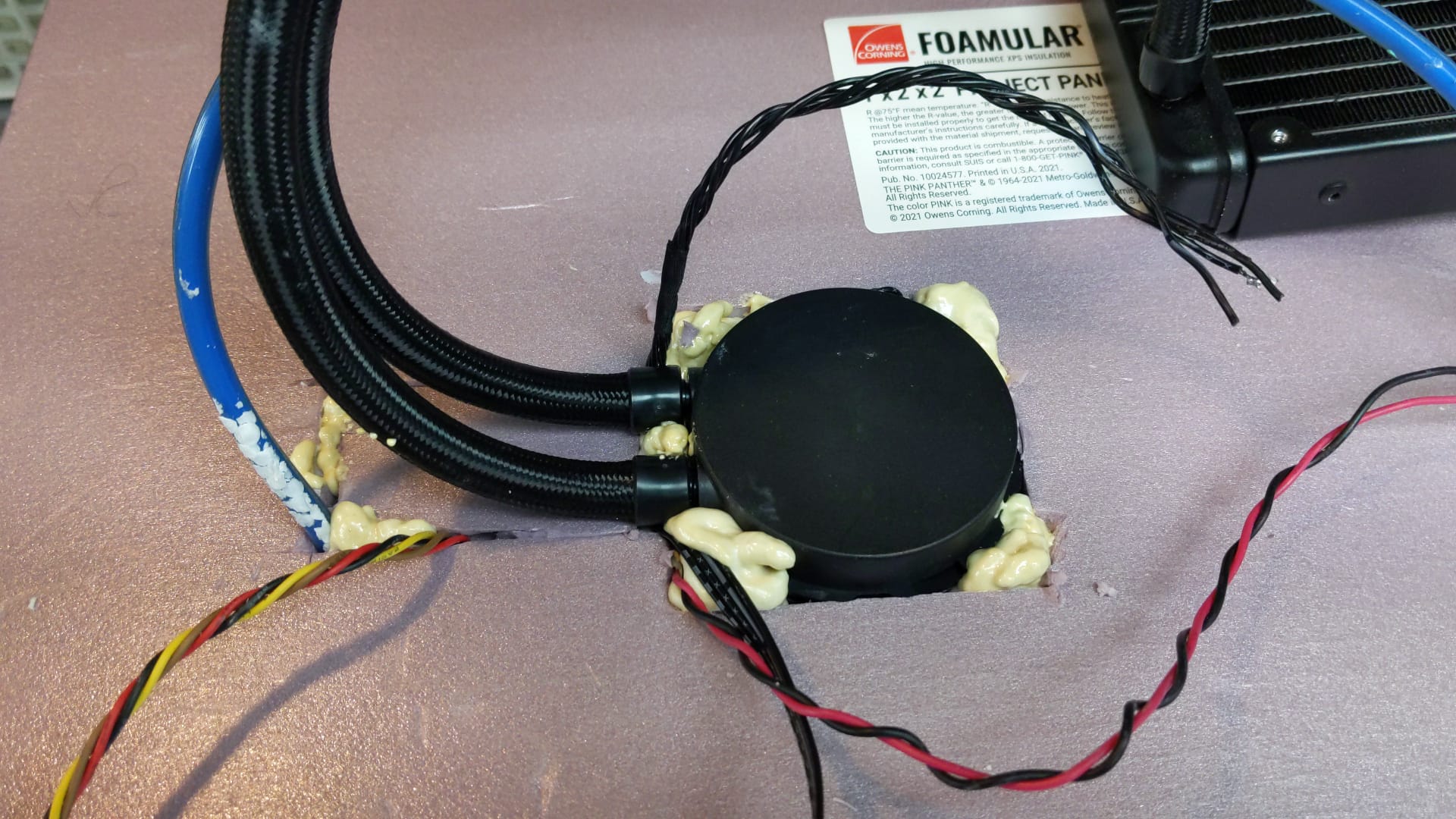
On top I've added some armaflex HVAC insulation to further seal up the assembly.
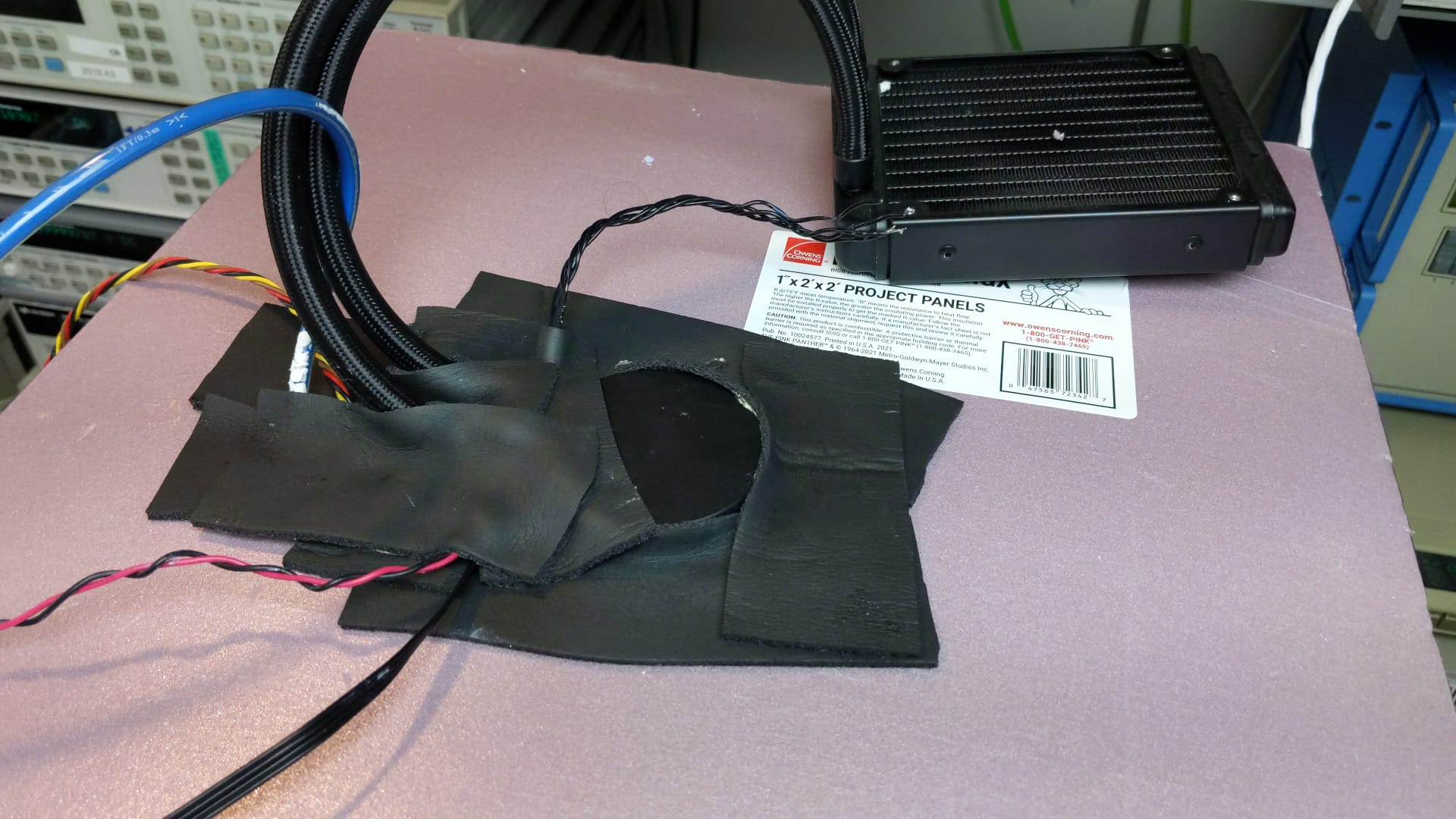
Looks from inside :
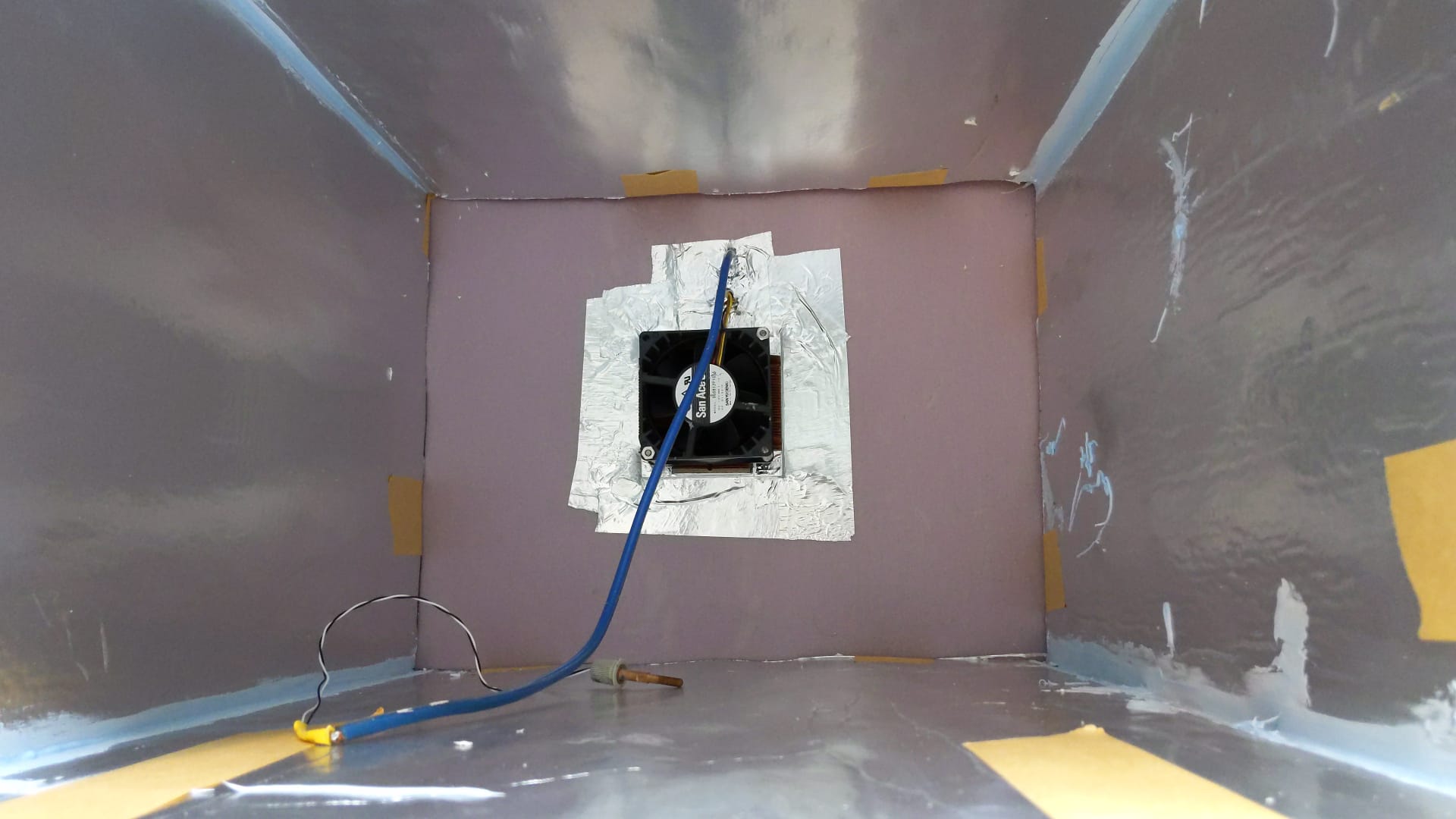
Some MLI waiting to be applied on outside as well after I deal with wiring.
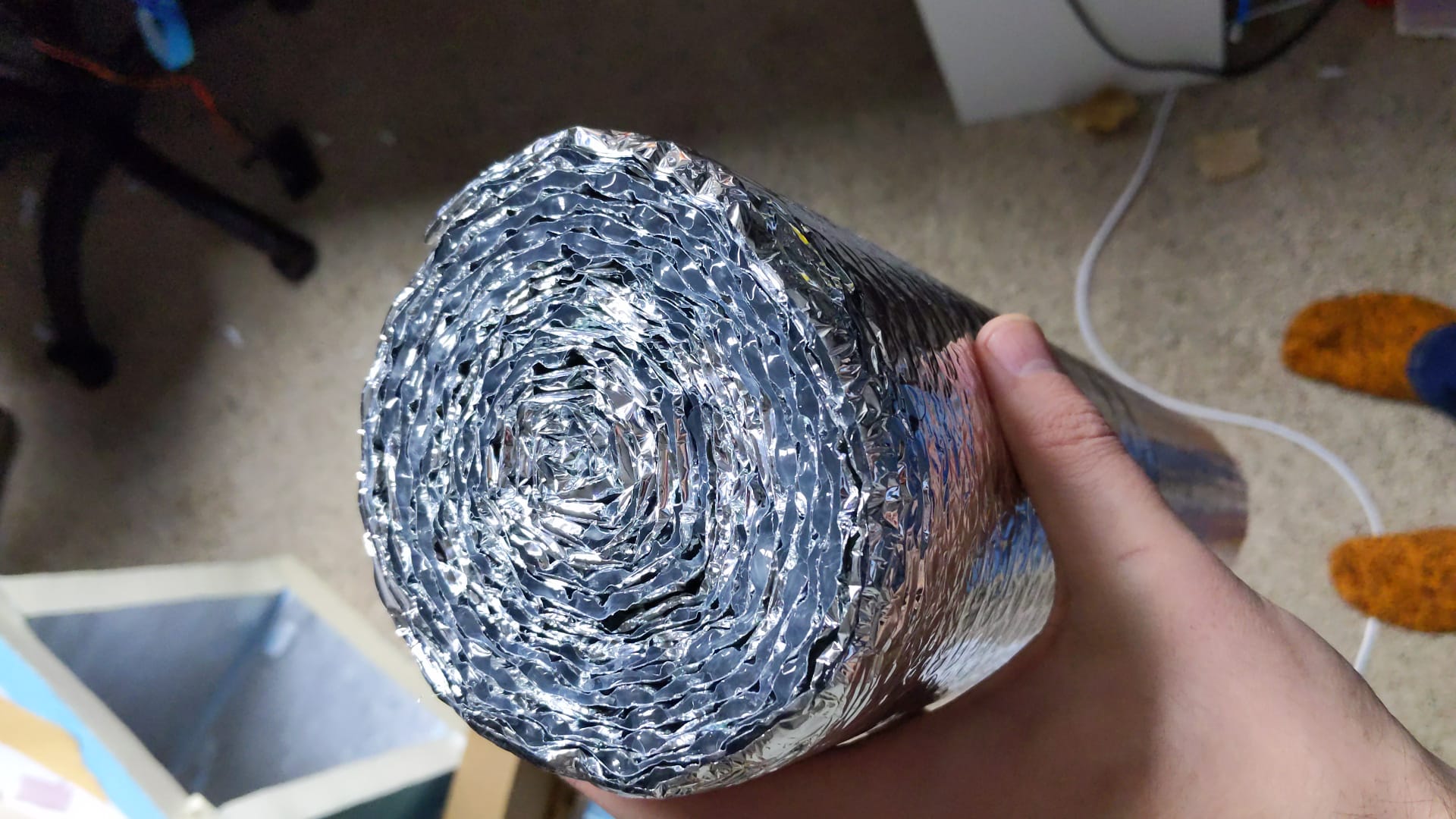
After a quick test run, I've ran TEC cooler with trusty Keithley 2510 a bit and it went down to +4.7ish C with 25W cooling. Then after 1 hour it went to +50.0 and settled there with +11W heating. This was without good seal on front door, so I hope can imporove numbers a bit after more tuning.
Now we can escape some permanently fixed wiring into chamber and seal up the back.
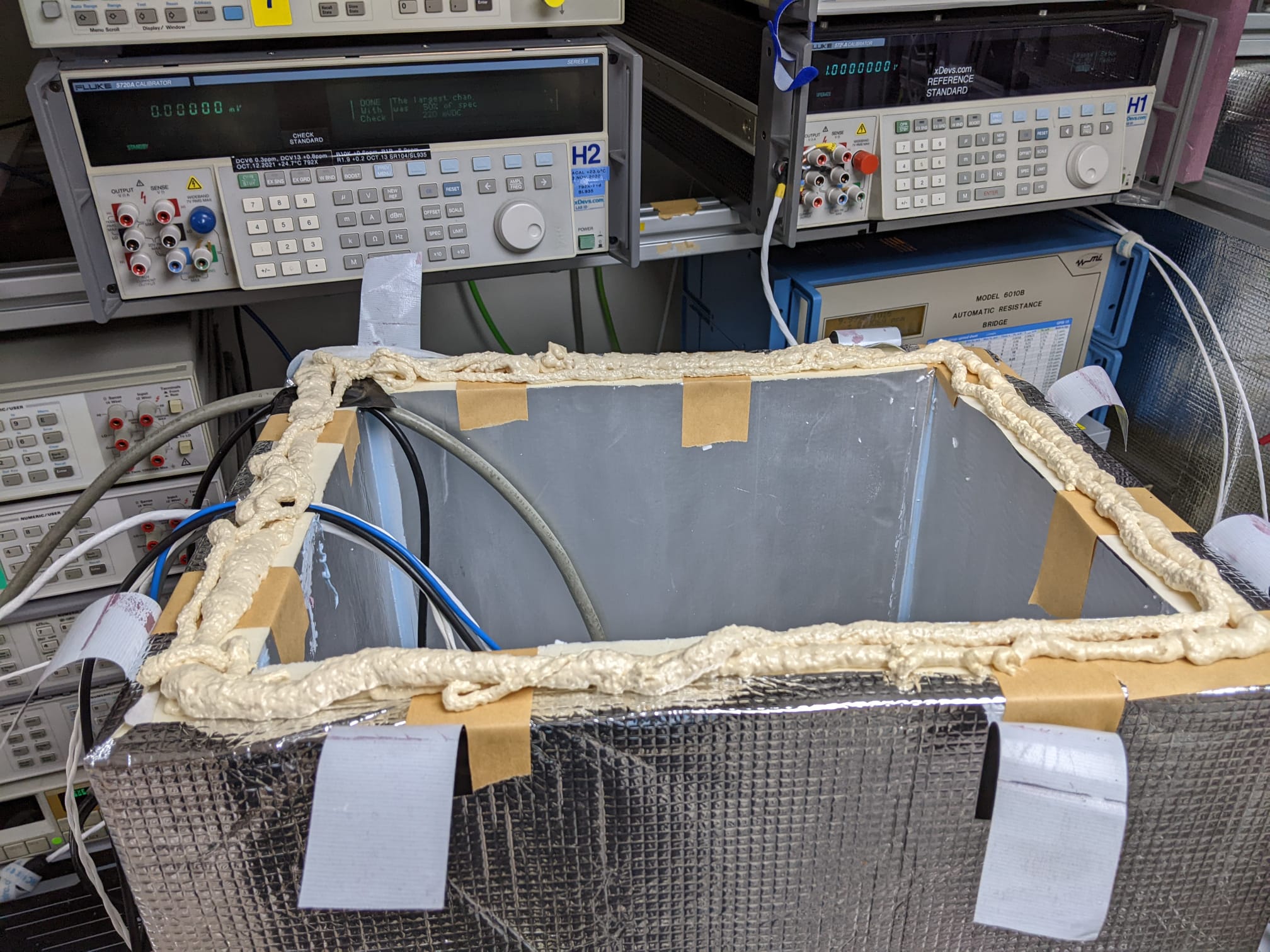
Cables that I captured into this chamber are : 1 mains cord, 1 GPIB cable, three PTFE 4-wire cables, twinax cable with triaxial connectors and BNC cable. This should be plenty for most of DUTs, and I still can run custom cables from the front when needed.
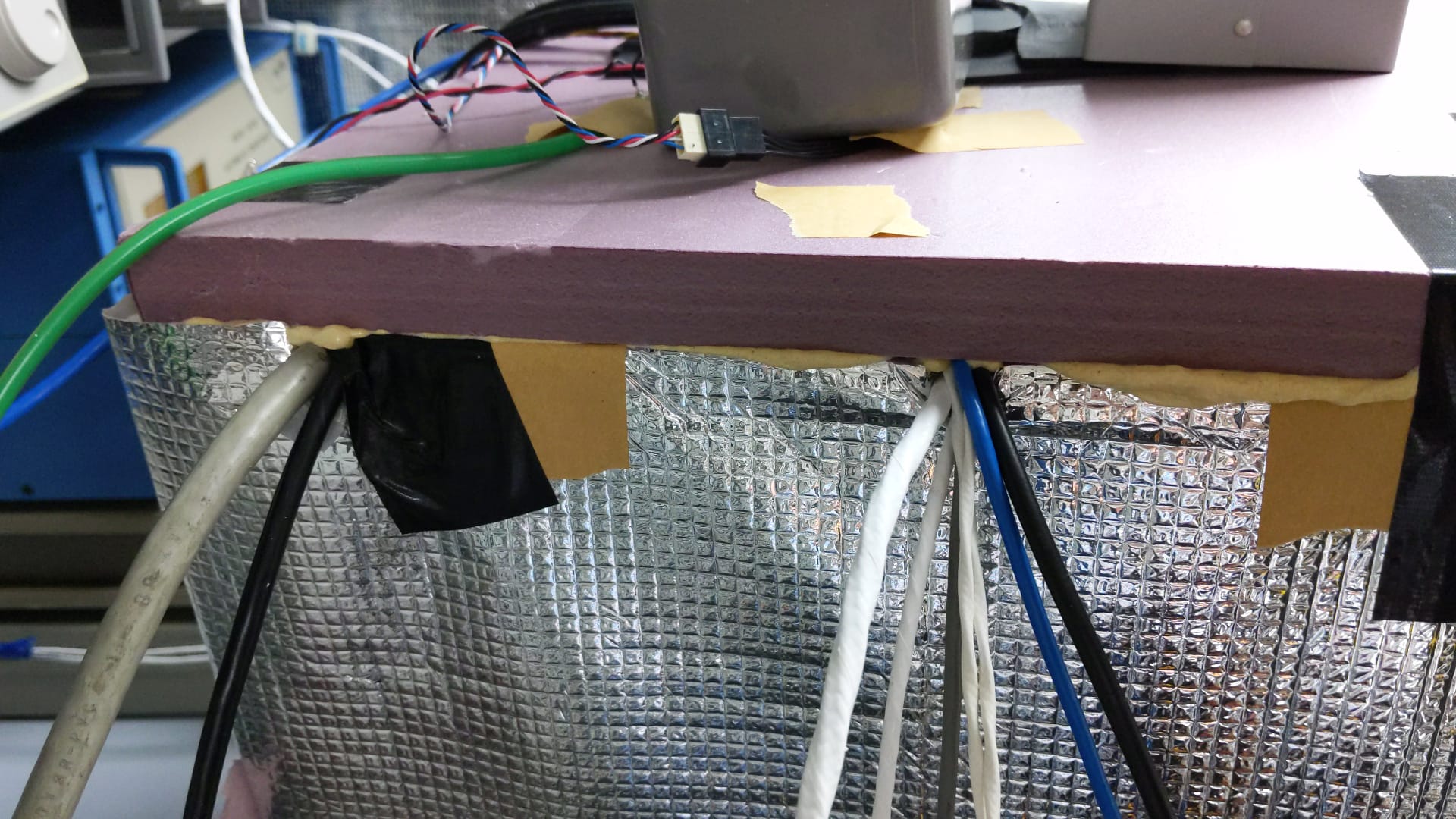
Some Fluke 335 heavy transformers and ductape put pressure for better bond

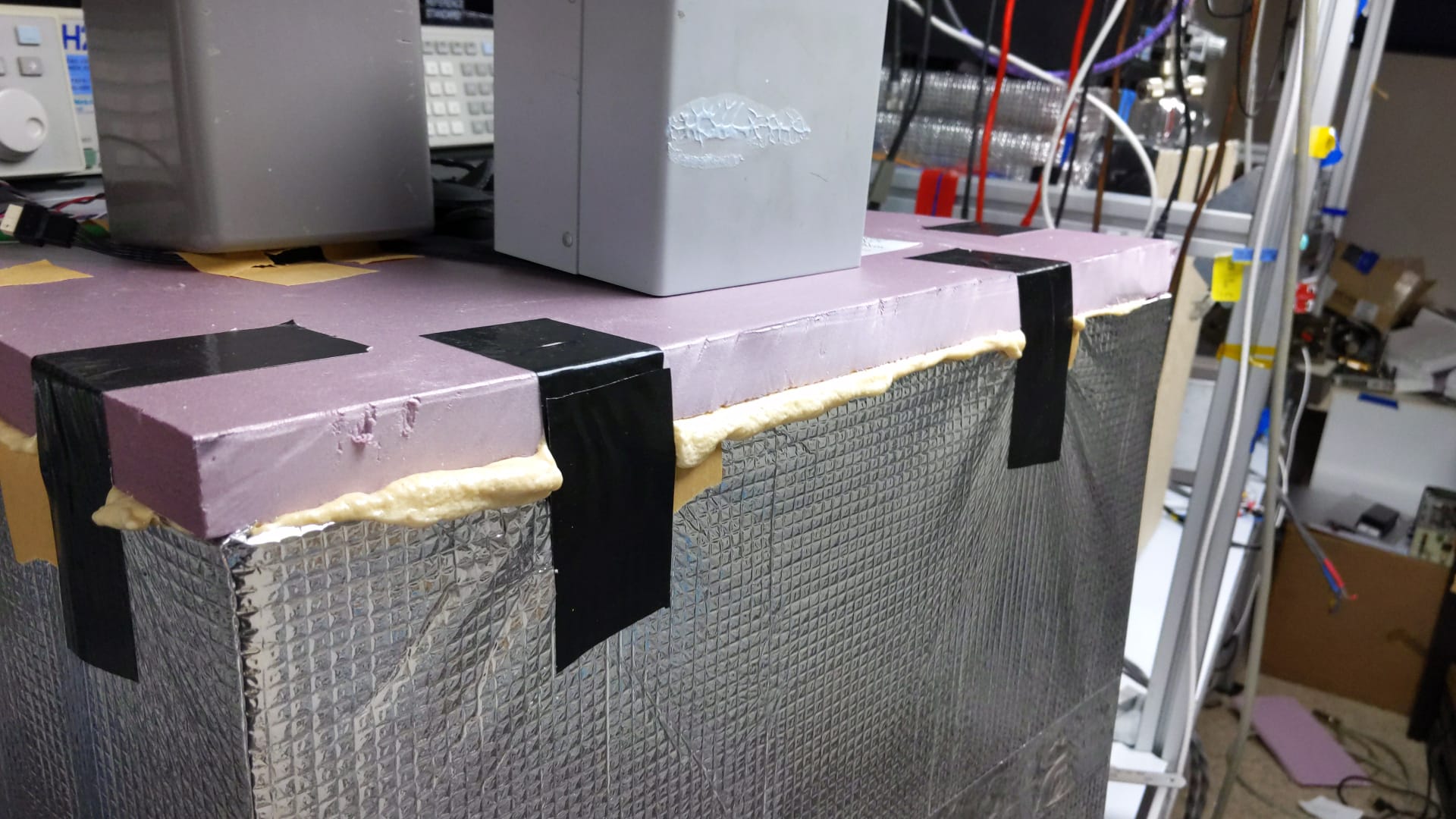
Test run snap-shots:
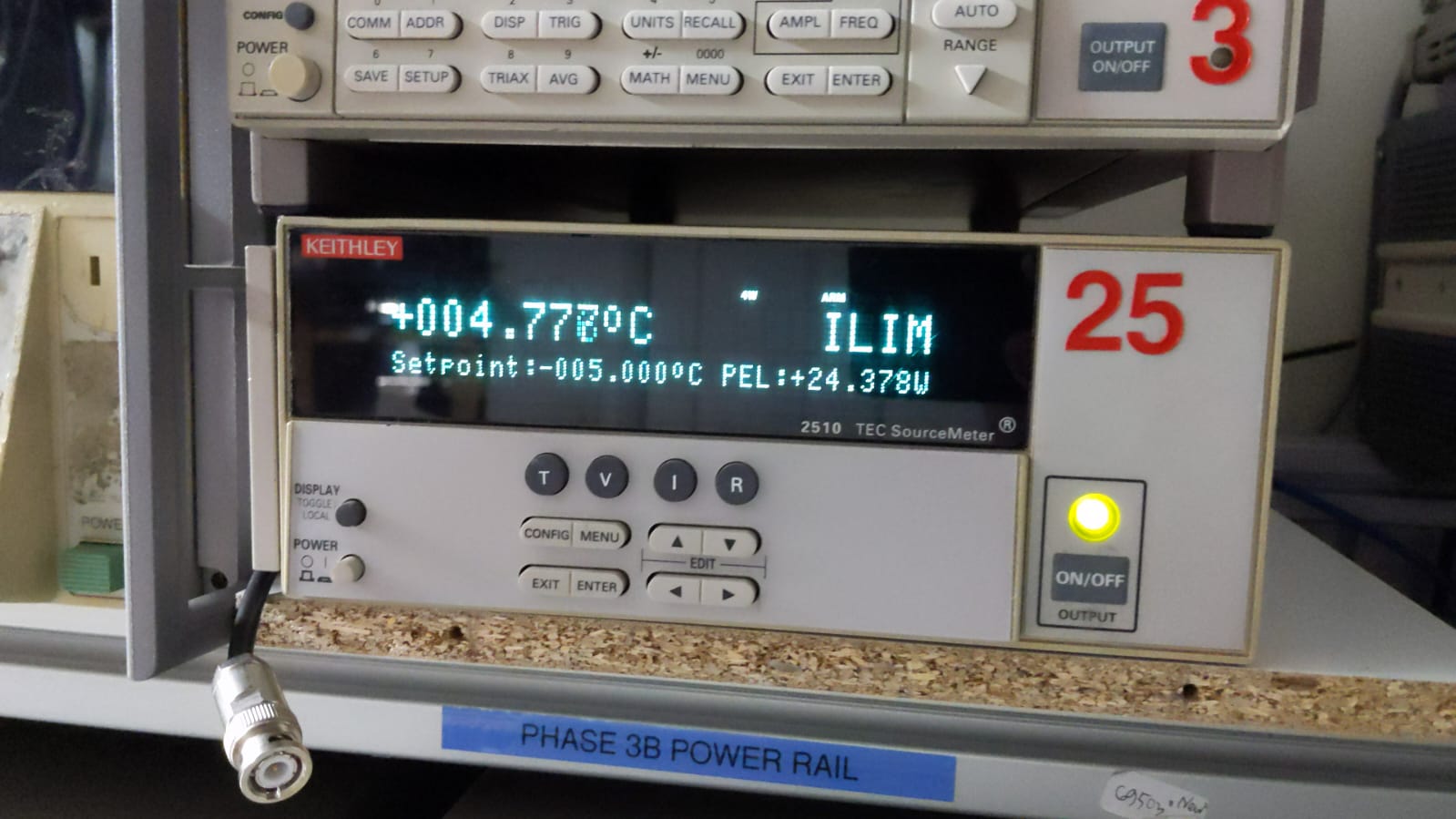
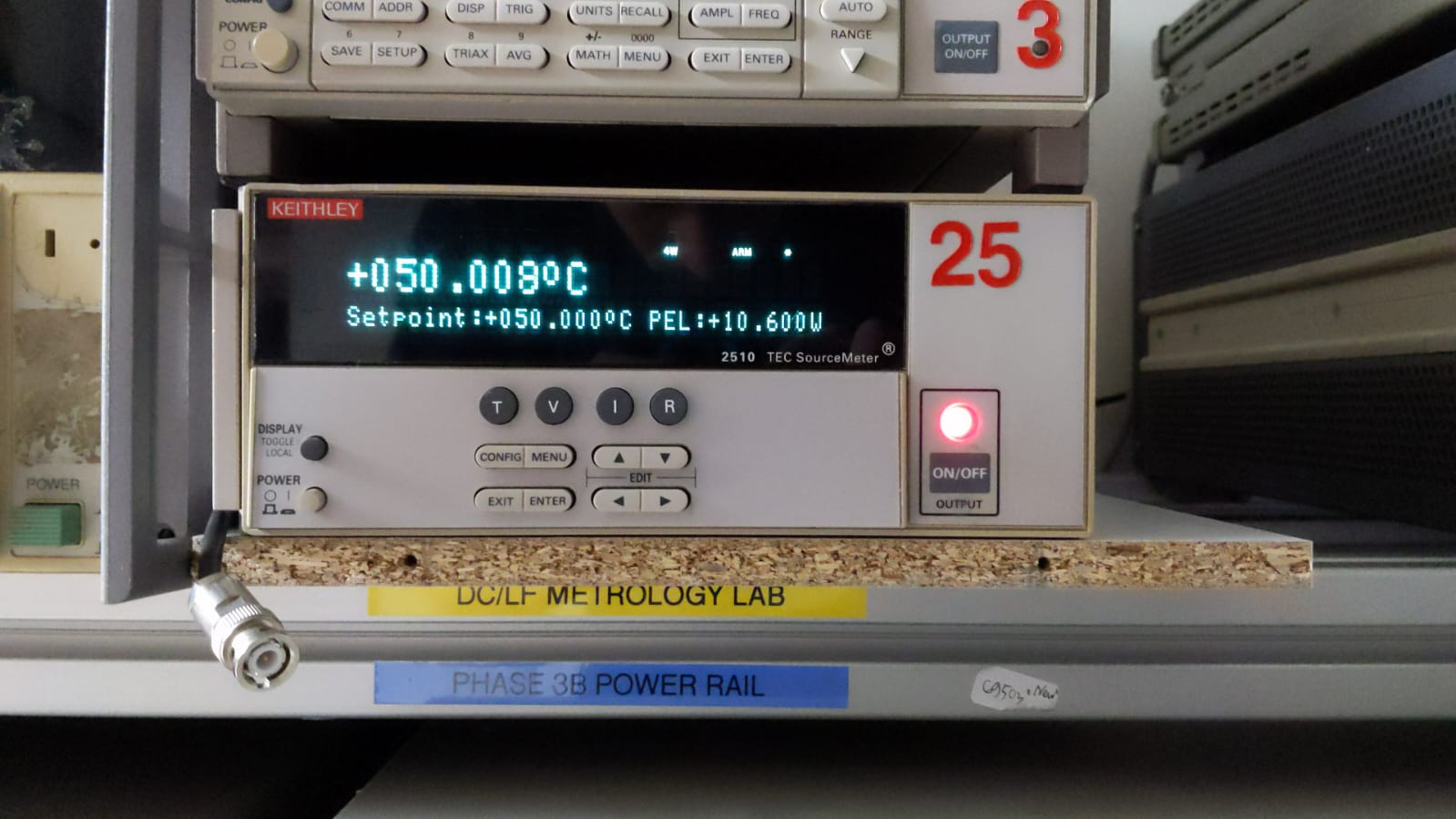
CH1 powered mixing fan at 8V, CH2 powered pump and radiator fan. I'll get small dedicated power supply for this power later, no need for lab supply here.
